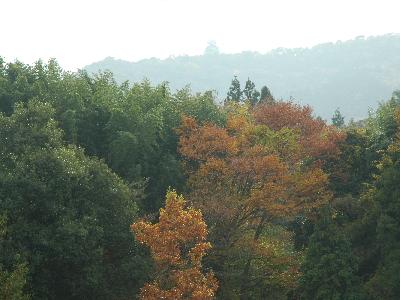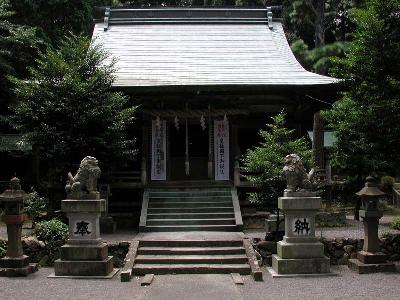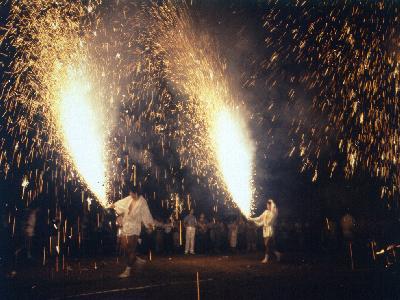Kusanagi Shrine located in Kusanagi, Shimizu-ku, Shizuoka City, Shizuoka Pref. is a shrine that enshrines Yamato Takeru no Mikoto. According to the myth, Kusanagi is the place where Yamato Takeru broke away the fire attack by sweeping off the grass with a holy sword named Amenomurakumo no Tsurugi (later called Kusanagi no Tsurugi, a part of the Imperial Regalia of Japan) and sparked off intersect fire with firestones. Later , his father, Emperor Keiko, built a shrine here. The sword was dedicated to the shrine, but in 686 it was transferred to Atsuta Jingu Shrine by the order of the emperor. At the annual festival held on September 20, a lot of people gather together to enjoy Ryusei Fireworks, which is said to originate in a signal fire and designated as the prefecture’s intangible folk cultural property.















